Can your average blog introduction hook a reader within thirty-seven seconds? If not, it doesn’t matter how compelling the rest of your post is, because the reader is already gone.
The short attention span of the modern internet user and the abundance of blog posts available are why it’s vital to write engaging blog post introductions. If the reader isn’t gripped within a few seconds of opening your blog post, there are hundreds of others where they can try to find the answer to their question.
I have been writing and following blogs for many years now, and it's surprising to me how many people are really bad at the intro. It's either boring and uninspiring, or it gives away all the information upfront.
In this article, we will explore the best practices of writing blog post intros, their purpose, and how to hit a home run with them every time.
VIDEO TRAINING
Get The Growth Marketing Playbook.
Learn to plan, budget, and accelerate growth with our exclusive video series. You’ll discover:
- The 5 phases of profitable growth
- 12 core assets all high-growth companies have
- Difference between mediocre marketing and meteoric campaigns
Thanks for submitting the form!
Why Are Effective Blog Introductions So Important?
Before we go through some best practices, let's get on the same page as to the purpose of the intro. And, to really understand where the intro fits, we must first zoom out and see the blog post as a whole.
First, consider the journey of a person discovering your article. If your ideal reader lands on your blog post, where did they find it?
Many people may come through social media, and if you're great at SEO, they'll find your article through search engines. In either case, let's take a look at what they see before clicking over into your article.
Search engine results pages and social media posts both tend to show readers the same few things: The blog title and either your meta description or a snippet of your introduction. You need to have a strong title and meta description to capture the click, but once they’re on your post, you have one job: Keep them there.
That’s where the blog introduction comes into play.
The Purpose of the Blog Post Introduction
Now that someone has clicked through to your blog post, your job is not done. It's just beginning.
Regardless of whether the traffic to your post has come from a social media post, search, or somewhere else entirely, the prime point of engagement is now the introduction.
And the introduction's purpose is also singular: sell the read.
Just as your title and meta description must sell the click, the introduction must sell the read. If your introduction is boring, people are going to bounce. They may skim. But, they for sure aren't going to be engaged with your content.
A captivating blog introduction consists of content that intrigues, teases, and maybe even annoys or offends the reader - whatever it takes to make them want to read the rest of the article.
All the energy must go to making it compelling - compel the reader to read.
An Example of a Horrible Blog Introduction
Do you like panning for gold? My team recently traveled to the most remote area of Alaska to dig for gold. We found the biggest gold nugget I've ever seen, four pounds worth! In this article, I'll tell you all about the trip.
An Example of a Compelling Introduction
Do you like panning for gold? This last winter, a team of eight rugged mountain men trekked through howling winds and blinding snow into the most remote area of Alaska. The goal: to hopefully find some gold. After two months of crushing disappointment, this group of prospectors stumbled upon the biggest find of their lives! Three weeks later, the team emerged to tell their story. In this article, I'll tell you all about it.
Which story do you want to read?
The first one is boring, and you know the secret - they found a 4-pound gold nugget. In the second example, there is drama and mystery. It makes you read the rest at least to find out what they found.
Best Practices for Writing a Blog Post Introduction
Your introduction needs to build anticipation, whether you're writing about prospecting or selling insurance. If you can't make the introduction a little mysterious or interesting, the rest of the article doesn't really matter, because very few people will actually read it.
Do tease the substance of the article. Don't give it away too soon.
I read articles all the time that basically tell you everything in the intro. If you give away the entire story in the first few sentences, why should anyone read the next thousand-plus words—or explore any of the CTAs you’ve included in the post?
Your introduction needs to tease the information, but the last thing it needs to do is give it away. Build the mystery, and you'll increase engagement.
Do disarm your audience. Don't be salesy.
Audiences want real, honest information. Your introduction needs to disarm your reader, especially if you're going to be talking about yourself. If your product or service is going to be a focal point of the piece, you need to disarm your audience. There's nothing worse than reading an intro from a braggadocios brand.
You know the kind - their service or product is the perfect angel, and all of their competitors pale in comparison. Here's the truth Sherlock, your competitors are saying the same thing about you.
If I hear another company talk about how they provide better support, or that their software is more reliable, etc. etc. Everyone is saying the same thing!
If your content is going to talk about you, you need to knock down the guards of your audience. They will have their guard up, knowing that you're horribly biased just like everyone else. And, they'll read all of your talking points through that lens - if they read it at all.
Your introduction (and the rest of your content, for that matter) needs to disarm. If your content is going to talk about your service, why not add in a little disclaimer - like, "we're not the best fit for everyone."
For Lean Labs, one of our go-to statements is "we're not the biggest, we're not the fastest, we're not the best, and we're not the cheapest."
Do we really admit we're not the best?
Yep! If you want the best, you'll pay a much higher premium than working with us.
Are we not the fastest?
No! If you want fast, go somewhere else.
Are we not a large agency?
No! If you want to work with a lot of entry-level employees, go find a big agency. They have plenty of them (if they haven't laid them all off recently).
Are we not the cheapest?
Nope! We're really good at what we do, and we charge accordingly.
What's the Point? Disarmament.
If I'm willing to tell you there are better, faster, bigger, and even cheaper agencies out there - will you believe me when I tell you where we are the best fit? Maybe not, but you'll be much more likely to believe me than if I talked about how great we were compared to everyone else.
Do take a stand. Don't be wishy-washy.
If you want to be interesting, you have to take a stand! But taking a stand alone is not enough: You have to take that stand firmly and back it up.
For example, if your introduction goes against a commonly-held opinion, that's really interesting. I'll read to figure out why. If you waffle back and forth instead of making a solid statement, though, that’s nowhere near as interesting. It actually makes you appear indecisive and unreliable.
In other words: If you're wishy-washy, who cares what you have to say?
Do be controversial. Don't fake it.
Everyone loves a bit of controversy. It’s why people gossip, watch reality television, and scroll through lists of “unpopular opinion” takes online. But controversy only works if it’s real. If your “controversial” blog intros are all drama and no substance, you’re doing something wrong.
Nothing makes me blackball a blog faster than having a really interesting introduction tease something really controversial, and then read it to find it's really nothing controversial at all.
"I may get fired for sharing this information with you!"
What is it?
"You can save 10% or more by switching to Geico."
Really?
There's nothing that gets reads like being controversial. But, if you're going to go controversial in your introduction, do it for real. Don't fake it for views. That's called clickbait, and it's annoying.
Do raise the stakes. Don't be fluffy.
Writing a novel? Get used to hearing your publisher ask, "what are the stakes?"
Your hero is boring if there isn't a lot at stake. If the stakes are too low in your article, the same rule applies. If what you have to say doesn't matter, why am I reading your article? And, if there is nothing at stake, why are you writing it?
What's at stake for this article? Well, if you write horrible introductions, no one will care about your content. If no one cares about your content, your marketing will suffer. If your marketing suffers, you'll lose to your competitors. If you lose to your competitors, you'll eventually lose your job. If you lose your job, you won't be able to pay your car payment, they will repo your car, you will get evicted, you will get hungry, you will...
Maybe that's being a little too extreme - but you get the point.
If the stakes were, you'll feel better about your intros... no one will care.
Related: How to Become the Undisputed Leader in Your Market
Blogger's Toolkit: 5 Great Introductions
Success!
Introductions are critical to an article, but that doesn't mean you have to brainstorm a new kind of lead for every article. If you build a toolkit of great openings, you can apply the right opening for the right kind of article.
Here are five of my favorites:
1. The Controversial Opening
What is the conventional opinion? If your content will challenge anything, your introduction needs to trumpet that challenge. It doesn't need to explain the challenge in full, it needs to open the loop that the conventional paradigm may be wrong. To accomplish this, you don't need to explore what's wrong with the conventional paradigm, but you do need to explore the results of that erroneous mindset.
For example, if the conventional knowledge is that running is the best cardio workout, your introduction doesn't need to explore why that's wrong. But, you can explore the ramifications of the paradigm. Because everyone believes this, there are a lot of people with bad knees and backs, hobbling through their later years. And then the article can tease a challenge - could there be a better way that is both better cardio and easier on the body?
If you write it right, they’ll have to read to find out.
Example: Contently
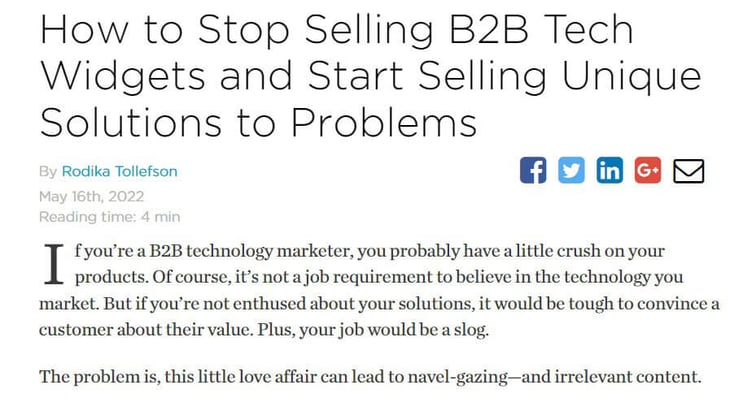
2. The Mystery
Much like the prospector example, if you can build a mystery with your introduction, and open a massive loop that they just have to close, your engagement will skyrocket. This is one of my favorite openings.
Example: Influencer Marketing Hub
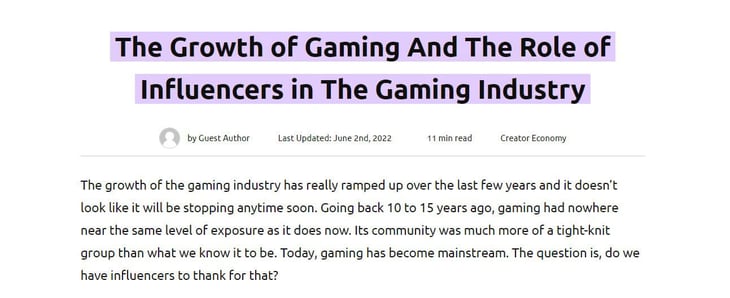
3. The What If
Steal from Steve Jobs and get the audience daydreaming.
What if you could have a device that was an iPod, a personal assistant, and a phone all in one?
What if you could have 1,000 songs in your pocket?
What if eight guys could spend three months in Alaska and come out with $6 Million worth of gold?
For the "what if" intro to work, you have to be coy enough to both keep the result a mystery, and also make the audience think, "did they figure out how to do it?"
When Steve Jobs was saying his "what if" statements, every single person watching was thinking, "did they find a way to do it?" That's what you want your audience to be thinking in your "what if" intros.
Example: Seth Godin’s blog
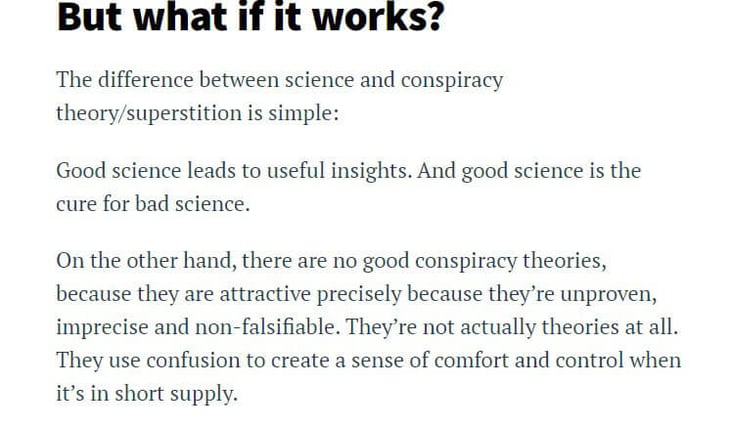
4. The Pain vs. Gain
This is an awesome opening, especially for articles that are about something you've learned through testing or experience. The introduction describes the pain and builds empathy - giving your audience something to relate to. The Gain is promised, not revealed, so that the audience wants to read the article.
For example, if your article is about learning a valuable lesson from almost falling off a roller coaster, the introduction will fall flat if it reveals the lesson you learned. Instead, talk about the pain of not knowing the lesson, and learning it.
Explore the pain of the before state - what was life like when you didn't know this particular thing. What kind of harm, pain, or damage was that causing? What were the feelings associated with learning it?
The more you can raise the stakes in this intro, the more compelling it becomes.
Example: Neil Patel’s blog
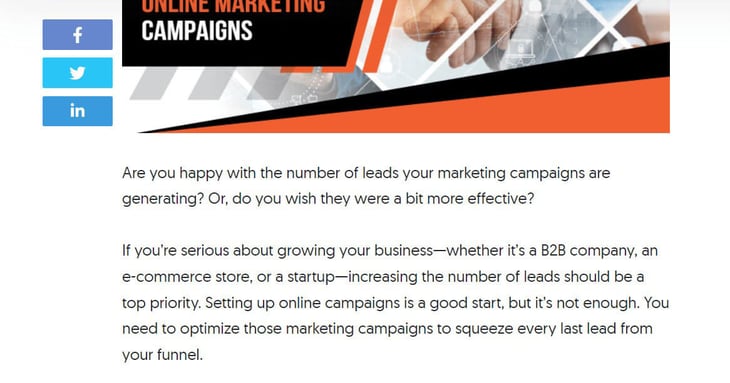
5. The Exchange
This introduction works great if the information you are going to share in the article has a direct, immediate benefit for the reader. Then, the introduction sells the article by promising the benefit in exchange for the read.
Describe the benefit, and the feeling of achieving it. Then, tease that the article is going to give that benefit. This is kind of like, "give me 5 minutes, and I'm going to show you how to tie your shoe all by yourself."
The introduction should talk about the pain of not being able to do/get/achieve X. Then, offer the benefit of reversing that pain in exchange for the read. "If you read this article to the end, you'll be able to X without Y."
Example: HubSpot blog
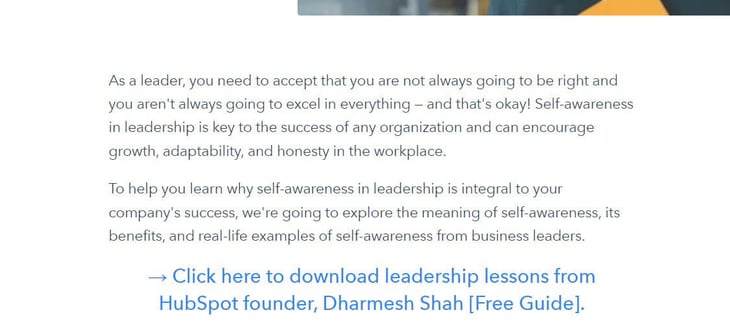
Blogger's Trash Bin: 5 Horrible Introductions
If you're using these openings, please stop. Your readers are begging you.
1. The Carnival Barker Opening
Step right up! This will amaze you, shock you, will make you rich!
If you can read your introduction and sound like a carnival barker, rewrite it. It's bad copy, and your readers will bounce.
2. The Have You Ever Opening
Have you ever wanted X? Then, this article is for you!
This isn’t as repellant as the carnival barker opening, but it certainly doesn’t do much to compel me to read on.
3. The Petty Peer Pressure Opening
We offer website design, and everyone is getting their websites redesigned. Smart companies are hiring us. If you're smart, you will do the same. This article will show you how to do what everyone else is doing. Don't be stupid and be the only one not doing it. Seriously, read this article. If not, you'll be all alone, not doing what everyone else is doing - which is getting a new website.
Meh!
4. The Over-Promise, Under-Deliver Opening
Four camels walked into a bar... you won't believe what happened next!
(Inside the article: the fifth one ducked and didn't hit his head on the bar. Nothing to see here.)
Don't promise the world and deliver a cup of dirt.
5. The Running Start
This is for all those who just can't seem to get to the point. You don't know who you are.
When you get finished with your article, go back to the introduction. How long did it take you to get the point? When I say point, I mean the point of the article.
What did you promise in your blog title? How many sentences did you write before you started delivering on that promise?
A lot of people take running starts to their articles. They back up, and talk about something kind of relevant to the title, and write a few paragraphs before actually getting down to brass tacks.
Get to the point already!
The Secret to Writing Killer Blog Introductions
If you really want to crush your introductions, you need to have a common practice where you consider the following things:
What does the title promise?
What is the intent of the reader? What do they want?
What's in it for the reader?
Why should they care?
If you can connect all of those dots into a compelling introduction, your engagement will go through the roof. If you're giving away too much information, if you're not connecting with these four points, or if you're just boring, the rest of the article doesn't matter.
Of course, writing a compelling blog introduction—or an entire compelling article—is just the beginning of your content marketing journey. If you want to see major traffic increases and watch your conversion rate skyrocket, you’ll need an entire growth marketing engine behind your blog-writing efforts.
Check out our Growth Marketing Playbook today to get started building the strategy that can help you 10x your business’s growth.